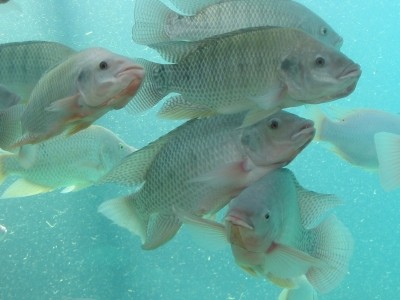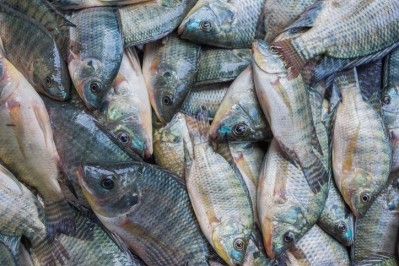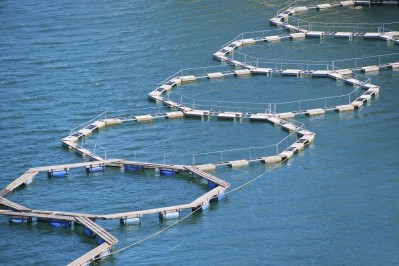How much lysine is needed for tilapia production?

A team of researchers from Brazil sought to determine the optimal amount of lysine to include in the finishing diet of tilapia as no previous requirement had been set.
The amino acid is considered the first limiting essential amino acid in many cereal grains used in fish diets, they said.
“Based on second-order regression analysis, the dietary lysine requirement for maximum fillet yield of finishing Nile tilapia was estimated at 14.6 g kg− 1, corresponding to 5.8% of dietary protein,” they said.
Why lysine
Fish diets are increasingly supplemented with amino acids because diet ingredients often fail to provide necessary levels, said researchers. The feed supplement also may boost weight gain, nitrogen retention and reduce body fat in fish.
However, most research has been focused on the diet for young or juvenile stages of development, they said. Little work has been done to establish the levels of lysine needed for production of adult fish.
“Besides the lack of data of essential amino acid requirements considering the adult phase, the dietary lysine requirement for optimizing fillet yield might be higher than that required for optimal weight gain, because this amino acid plays an important role in muscle development,” said researchers. “Evaluating dietary lysine requirements is of high priority in order to elaborate balanced and sustainable aquafeeds to avoid deficiency or excess of amino acids which can promote imbalance or antagonisms and impaired effects on growth performance and health of fish.”
The experiment looked at growth performance and muscle development to track the optimal level of lysine inclusion in adult fish diets, they said.
Experiment details
In the experiment, 600 fish were given one of five lysine treatments and three replicates were run, said researchers. The tests were run for 40 days in an outdoor aquaculture system.
The diets were created to offer 251.2g of crude protein kg -1, 13.1 MJ of digestible energy kg -1 and included 11.1, 12.5, 13.9, 15.1 or 16.4 g lysine kg -1, they said. The lysine additive was from Animal Nutrition Division, SP, in Brazil.
Feed consumption and water quality were recorded daily, they said. Final body weight (FBW), daily weight gain (DWG), the feed conversion ratio (FCR) and survival rate were established.
Initially, 30 fish were sampled and examined for whole-body composition and amino acid profile, said the scientists. At the end, fish were counted, weighed and six fish per cage were sampled for whole-body and amino acid analysis.
Additionally, 12 fish per cage were examined for fillet weight and yield, they said. Selected fish were collected for morphology and morphometric analysis of white skeletal muscle.
Results
FCR and the protein efficiency ratio were the best in fish getting either 12.5 or 13.9g of lysine kg-1, said the researchers. There were no differences in feed intake for fish getting the different levels of lysine.
But, fish getting the 15.1g lysine kg-1 diet had improved final body weight and daily weight gain when compared to fish getting the lowest level of lysine, they said.
“Fillet weight and fillet yield of finishing Nile tilapia were significantly affected by dietary lysine levels and optimized at 15.1 g lysine kg− 1 compared to fish fed the other treatments,” they said.
Whole-body and fillet makeup were not responsive to changes in lysine amounts, they said.
“Moisture, crude protein, crude lipid and ash content of whole-body and fillets were not significantly affected by dietary lysine levels,” said researchers. But whole-body lysine, tryptophan, alanine, aspartic acid and tyrosine retention was influenced by the level of lysine in the diet, they added.
Fish getting the highest dose of lysine had higher whole-body histidine, they said and those getting 13.9g of lysine kg-1 or more had higher whole-body isoleucine and phenylalanine than those getting lower amounts.
“Higher whole-body valine (VAL) content in fish fed 16.4 g of lysine kg− 1 compared to fish fed 12.5 g of lysine kg− 1 also was observed,” they said. “In addition, fish fed 12.5 g of lysine kg− 1 exhibited higher whole-body cysteine (CYS) content compared to fish fed 11.1 g of lysine kg− 1.”
Higher levels of lysine tended toward a greater frequency of muscle fibers ranging from 20 to 50μm when compared to other classes, they said.
The optimal level of 14.6g lysine kg-1 was determined looking at the results and using a second order regression analysis, said researchers.
Source: Aquaculture
Title: Dietary lysine requirement to enhance muscle development and fillet yield of finishing Nile tilapia
DOI: published online ahead of print: doi:10.1016/j.aquaculture.2016.02.022
Authors: M Michelato, L V de Oliveira Vidal, T O Xavier, L B de Moura, F L Alves de Almeida, V B Pedrosa, V R Barriviera Furuya, W Massamitu Furuya












